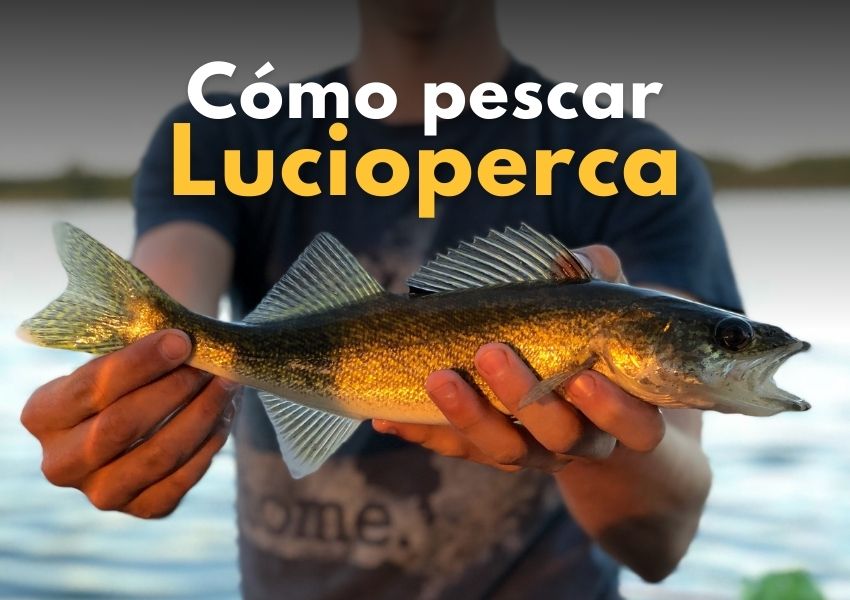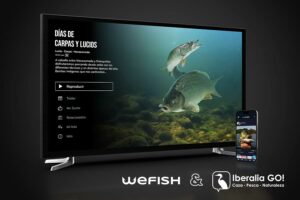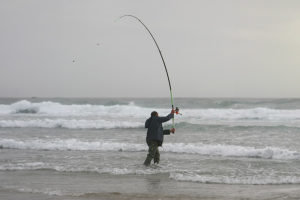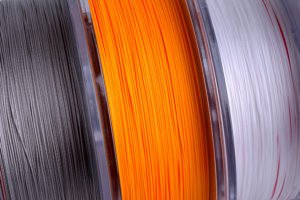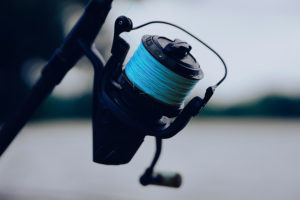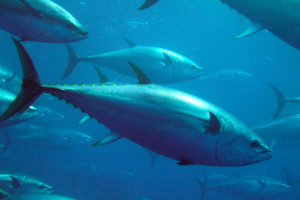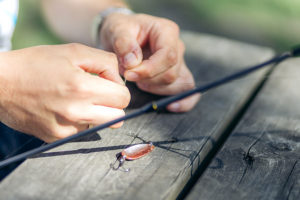Desde WeFish te traemos un artículo en el que te daremos algunos trucos y te recomendaremos algunas técnicas que serán útiles para pescar lucioperca. Antes de pasar directamente a los consejos, haremos un repaso pequeño de la especie. ¡Todo pescador debe conocer su presa! Hablaremos sobre sus características, hábitat, alimentación, mejor momento para pesarlas y, después, pasaremos a comentar las técnicas recomendadas y consejos para pescar lucioperca.
Detalles, hábitat y alimentación de la lucioperca
La lucioperca (Sander Lucioperca) es una especie de agua dulce que se encuentra directamente relacionada y emparentada con la perca. Pertenece a los pércidos y tiene un cuerpo oblongo, con una cabeza grande. El color de su cuerpo es tirando a verdoso, con algunos pequeños reflejos de color rosado y plateado que cruzan todo su cuerpo. Posee un par de aletas dorsales, de las cuales la frontal tiene pequeños pinchos que le ayudan a defenderse.
Sus ojos también destacan por su gran tamaño, al igual que sus dientes, que son numerosos y muy afilados. Gracias a estos puede cazar a otras especies pequeñas y medianas a pesar de no ser muy grande. De hecho, su tamaño varía de entre 25 a 70 centímetros de media, pudiendo alcanzar alrededor de 120 centímetros de máximo. La luciopercas macho alcanza la madurez sexual entre los 2 y los 4 años, y las hembras entre los 3 y los 5.
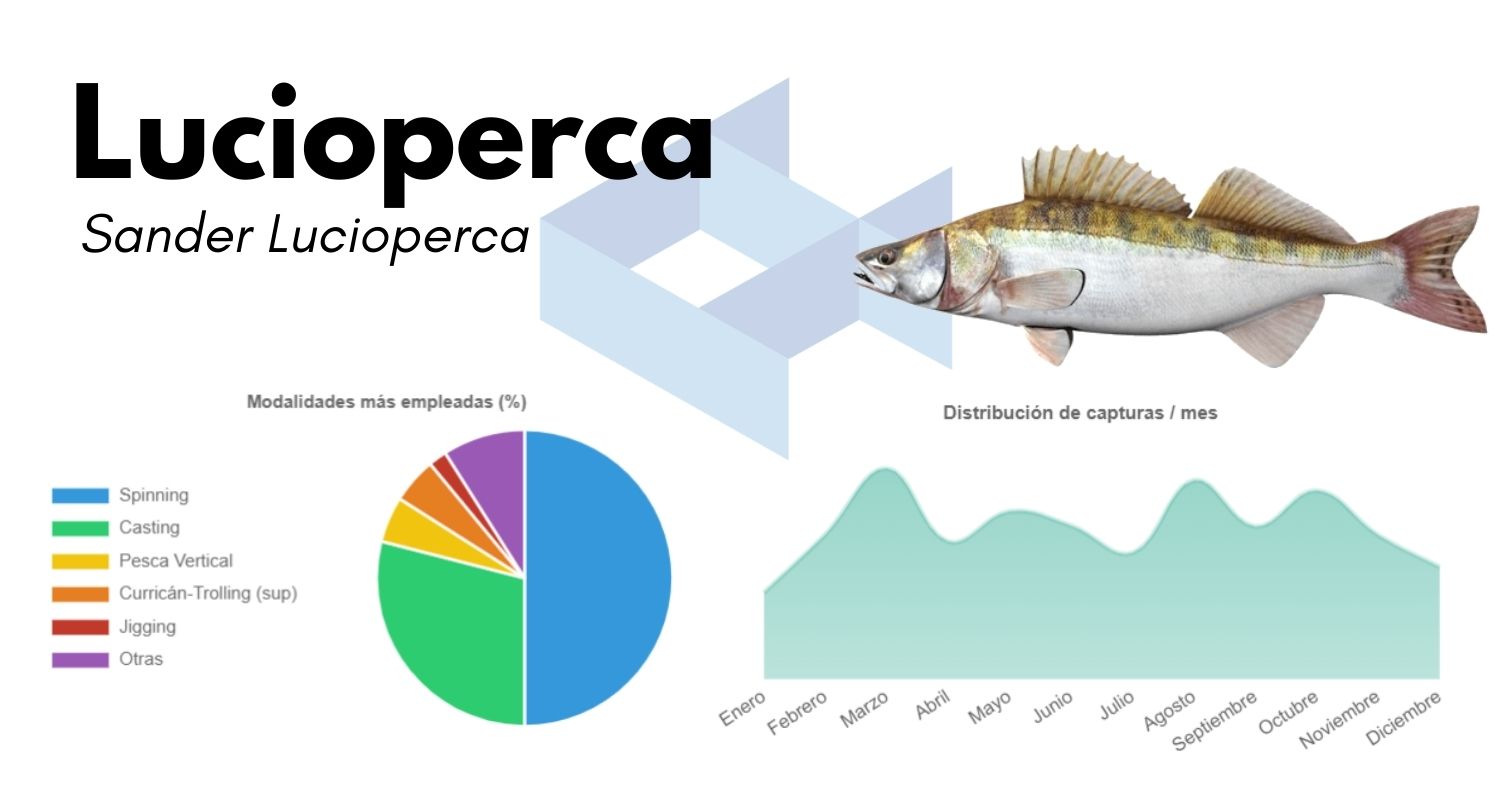
Para pescar lucioperca, debemos conocer también por dónde se mueve, este animal es nativo de la zona este de Europa y de agua dulce. Sin embargo, se encuentra extendido en España. Introducido ilegalmente a finales de los años 79 y distribuyéndose en diferentes embalses. De hecho, se encuentra catalogada como especie exótica invasora en nuestro territorio por su carácter colonizador. Es común encontrarla especialmente por la zona oriental de España. Frecuentan tanto aguas dulces tranquilas como aguas con fuertes corrientes, cuando van de aquí para allá como parte de su ciclo de reproducción.
Su alimentación se compone de larvas, gusanos, renacuajos, insectos acuáticos y peces de entre 5 y 25 cm. Generalmente las especies más jóvenes comen exclusivamente invertebrados y pasan posteriormente a una dieta mixta en la que su alimentación se amplía.
Cuándo y dónde salir a la búsqueda de lucioperca
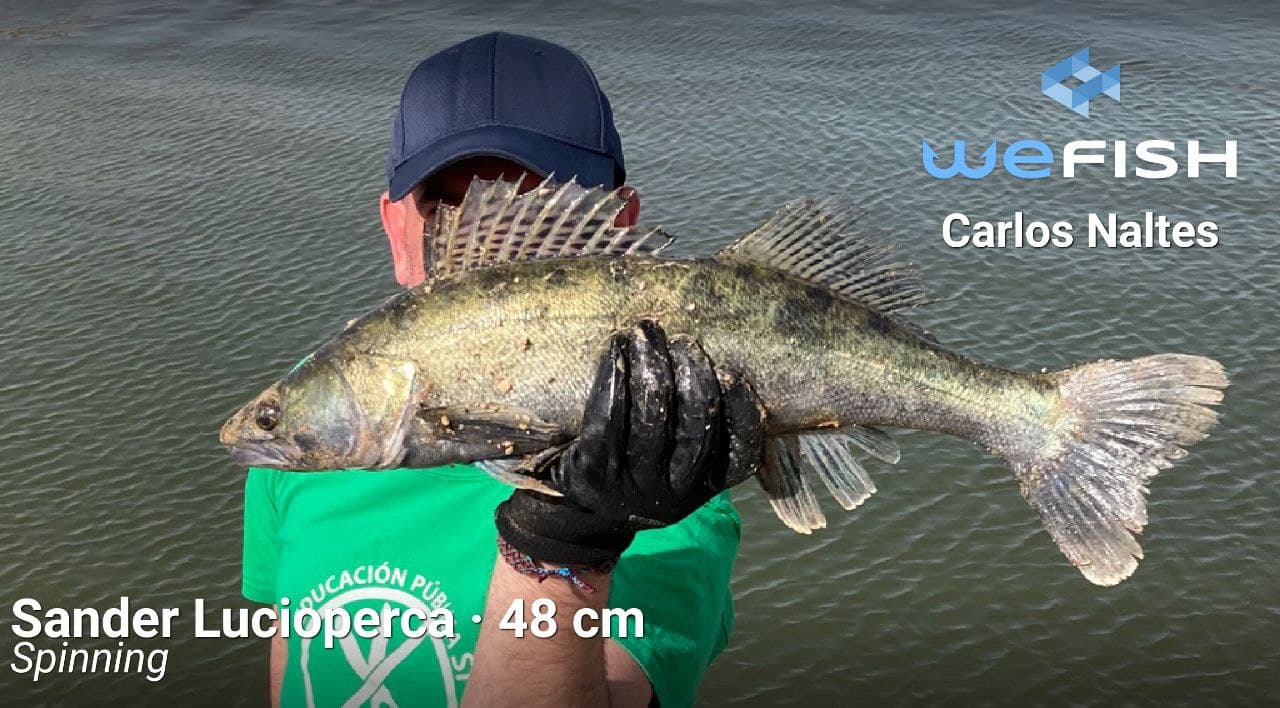
Una vez que ya hemos hecho un repaso por las características principales de la lucioperca, vamos a pasar a comentar cuándo y dónde podemos salir a la búsqueda de un buen ejemplar de lucioperca.
Para pescar lucioperca los mejores meses son octubre/noviembre. Previamente, durante el verano, esta especie ha estado “ocupada” con su ciclo de reproducción custodiando los huevos y ahora necesitan comer. Será muy extraño ver una lucioperca a ras del agua, ya que suelen ser de agua profunda. Por eso, lo bueno de pescarlas en esta época es que los temporales, lluvias, y temperaturas más frías harán que el agua se enturbie y se acerquen más a la superficie. En cualquier otra época del año será casi imposible ver a un lucioperca cerca de la superficie. Es recomendable buscar zonas con elementos que favorezcan la aparición de huecos, como profundidades de piedra, maleza sumergida, etc., ya que pueden encontrarse entre ellos. No quiere esto decir que en invierno se encuentren en aguas agitadas, sino que el temporal hará que sean más visibles, aunque las aguas sean tranquilas. Por ejemplo, en verano sí podremos encontrarlas en aguas con corrientes, ya que las atravesarán volviendo del desove, como hemos dicho anteriormente.
Otra cosa que puede ser valiosa saber es que, por lo general, todo el mundo va a intentar pescar lucioperca durante el día, cuando se encuentran más pegadas al fondo, entre huecos, maleza… No obstante, las mejores horas son por la noche. Como hemos dicho anteriormente, la lucioperca tiene unos ojos muy grandes y estos sirven, precisamente, para visualizar mejor las aguas oscuras. Su fisiología está, de hecho, diseñada para la noche. Entonces es cuando la encontraremos por las orillas buscando también alimento.
Técnicas y trucos para pescar lucioperca
Ahora que ya hemos hecho un repaso por los detalles de la lucioperca, su hábitat, su alimentación y dónde podemos encontrarlas, pararemos a daros algunas técnicas, trucos y apuntes a tener en cuenta en la pesca de lucioperca. Así, algo muy importante a tener en cuenta para pescar lucioperca es la profundidad. Como hemos dicho antes, se trata de animales de profundidad, por lo que si estamos pescando a una profundidad de 5 metros y la lucioperca está a 7, nunca la vamos a pescar. Tenemos que acercarnos a donde estén. Esto variará, como hemos dicho, en días de aguas cristalinas será imposible encontrarlas relativamente cerca de la superficie, pero cuando el agua esté más turbia sí podrán estar en un rango de profundidad menor.
Para pescar lucioperca, recomendamos utilizar un crankbait que se pueda utilizar hasta al menos 6 metros de profundidad. Ahora bien, cuando están a ras del fondo lo mejor será utilizar vinilos o el truco de utilizar un pez muerto y manejarlo y esperar a que la lucioperca pique. Se trata de un método muy efectivo y que se encuentra ampliamente extendido para la pesca efectiva de la lucioperca, pero hay más, como veremos ahora mismo.
Otra de esas técnicas recomendables para pescar lucioperca es el la de jigging. El jigging es también una técnica muy efectiva para la pesca de la lucioperca. Como ya hemos explicado en algunos de nuestros artículos, esta técnica recibe este nombre por el señuelo utilizado (jig). Se trata de tirar el anzuelo y mover el señuelo como si se tratase de un pez que intenta subir hasta la superficie de manera vertical para engañar a los peces que queremos pescar. De ahí que también reciba el nombre de “pesca vertical”. Es muy atractiva para pescar peces de gran tamaño que se encuentren en las profundidades.
Otro consejo que os podemos dar es que al tener unos ojos tan grandes, emiten cierto brillo que hará que sea más fácil de reconoces y de interceptar. Sobre todo por la noche cuando, como hemos dicho, salen a alimentarse con más frecuencia. El spinning o casting también son buenas opciones y técnicas para pescar lucioperca. Recomendamos cebos spinner o minnow. De todas maneras, os resaltamos que, como hemos dicho antes, uno de los cebos favoritos de la lucioperca son los jigs.
Para acabar, también resaltar que, cuando utilizamos spinning para su captura, es recomendable una caña de spinning que tenga bastante fuerza (entre 10 y 60 gramos de acción mínima). Siguiendo con la línea de la profundidad, el carrete también debería tener una buena longitud de seda para alcanzarla. Además esta es una pesca donde el tacto es muy importante, por lo que utilizar también está claro que el uso de líneas trenzadas es recomendable para obtener picadas buenas y efectivas.
Gracias por haber estado con nosotros en este repaso de cómo pescar lucioperca. Como habéis visto, la pesca de lucioperca dependerá del momento del día, de las condiciones del día, de la estación del año y del estado del agua, pero esperamos que nuestros consejos te hayan servido. Estamos seguros de que con ellos conseguirás pescar buenos ejemplares de luciopercas.
Te informamos también que en nuestro blog encontrarás información sobre diversos temas de pesca que te pueden interesar. Por ejemplo, si eres principiante y no estás familiarizados con las técnicas principales, tenemos este artículo para ti. Si, por el contrario, ya eres un pescador lanzado y quieres indagar en alguna modalidad en particular, te recomendamos también nuestros artículos sobre por ejemplo, pesca al curricán. Si te ha gustado este artículo, échale un vistazo también a nuestra guía para pescar pargos u otros artículos donde te proporcionamos información y consejos sobre cómo pescar otros especies como consejos y técnicas para pescar pulpos o este otro sobre trucos y equipo para pescar truchas
Recuerda que con WeFish puedes comprobar cuáles son las especies más activas en tu zona y hacer diferentes experimentos para aprovechar al máximo tu jornada de pesca. Descárgala pulsando en el banner y comienza hoy mismo a formar parte de la comunidad de pesca más grande de habla hispana. Allí podrás conocer a otros pescadores y compartir con ellos consejos, recomendaciones y más..

